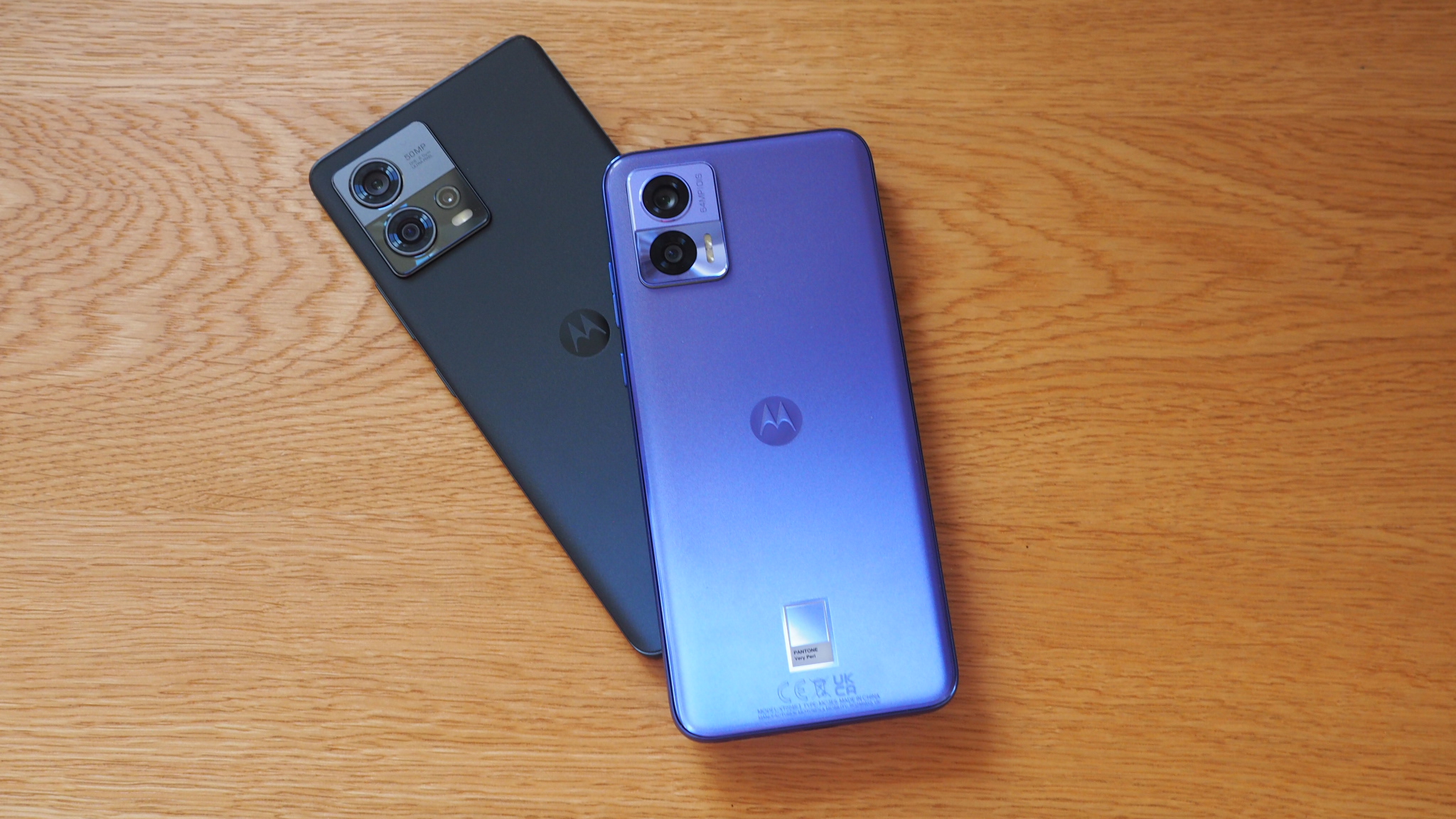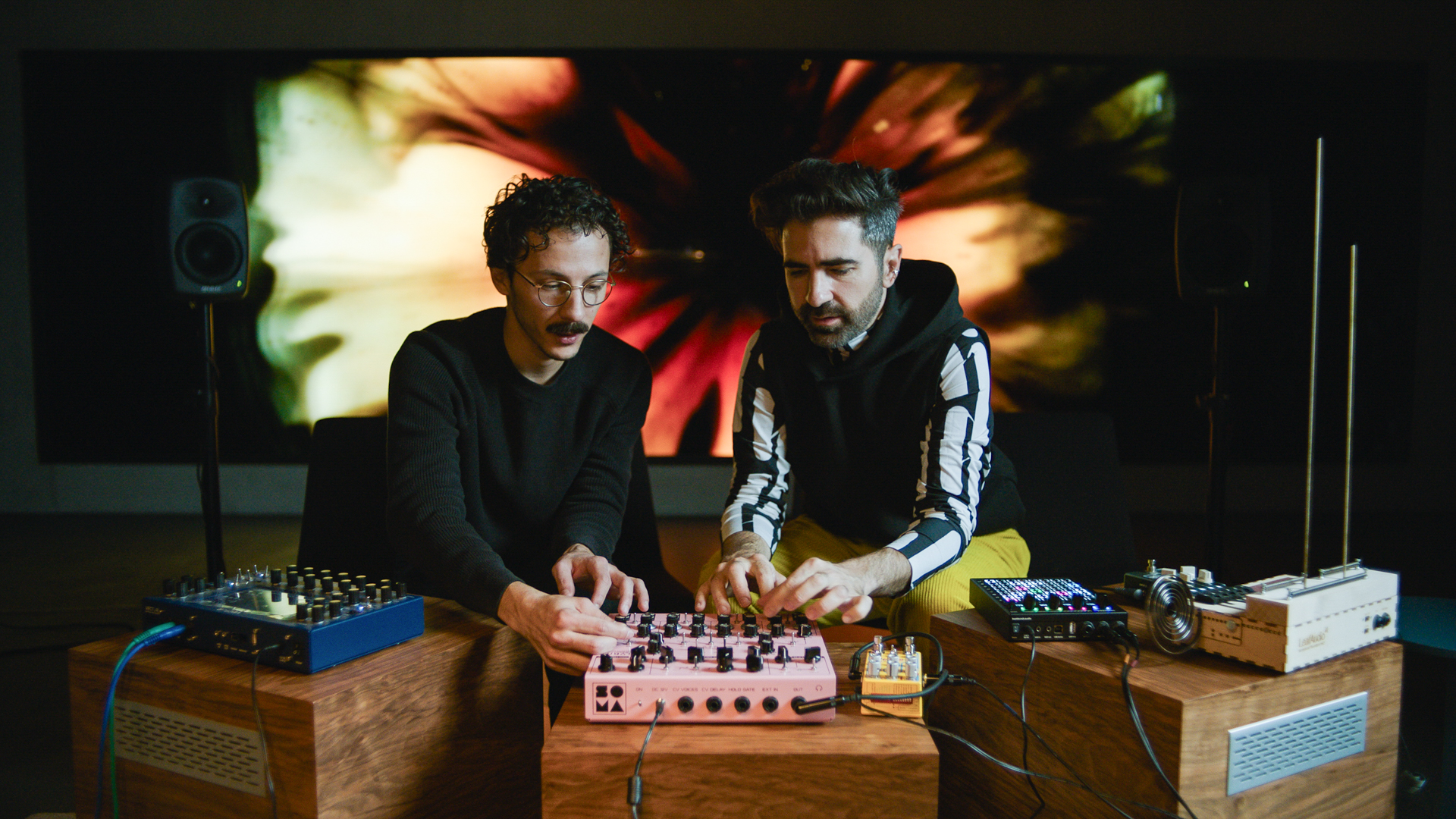
Motorola is taking its flagship game up a notch, with the introduction of three new Edge handsets for 2022: the Motorola Edge 30 Ultra sits at the top of the stack; the slightly smaller Edge 30 Fusion sits below that; and the uniquely colourful Edge 30 Neo – which bears the fruits of a Pantone exclusive collaboration – is the more trendsetting-targeted model at the entry point of the series.
But what are the key differences between the Edge Ultra, Fusion and Neo, and which one might suit you best for your needs? T3 got an exclusive early look at the handsets at Motorola's headquarters back in June (when the '30' in the name wasn't even part of the deal), talking to company executives to gather insight around the Edge range ahead of its worldwide announcement (which, it's worth pointing out, will not arrive in North America). Here's what to expect from these handsets.
Motorola Edge 30 Ultra vs Fusion vs Neo: Design
The Edge 30 Ultra and Fusion should be considered as more closely aligned, the former the largest of the lot at 6.67-inches, the latter a slightly more palm-friendly scale at 6.55-inches. That doesn't sound like a lot, but it makes a big difference in the hand: the Ultra is a little wider as a result of its biggest-in-series screen size.
The Edge 30 Neo, on the other hand, could almost be considered separately from the other two. Sure, it's part of the same series, but it's much smaller, at 6.28-inches, so fits in with that trend of small and pocketable devices – much like the Xiaomi 12 or iPhone 12 Mini in among the best small phones.
But of the three it's the Neo that introduces a real point of distinction: Motorola has an exclusive deal in the mobile phone space with colour specialist Pantone. That means exclusive on-trend colour finishes, ones that you won't find in any other makers' portfolio, which is set to be an exclusive "multi-year deal".
What does the Pantone partnership mean in practice? For the Edge 30 Neo it means Very Peri ('Pantone Color of the Year 2022', no less), which is a purple/blue type finish; Aqua Foam, a more muted green colour; Ice Palace, which is a fancy way of saying grey; and Black Onyx, which as the name suggests is very much black.
It's not the first time Pantone has worked with phone-makers though. Huawei had a deal back in 2017 with a 'Greenery' version of its P10. It didn't look very nice (despite that being Pantone's 'Color of the Year' back then). Thankfully, Motorola has selected far more sensible colour options (but then undone some of its good footwork with the bizarre decision to place an integrated Pantone swatch-like emblem on the rear of each Neo device).
Sign up to the T3 newsletter for smarter living straight to your inbox
Get all the latest news, reviews, deals and buying guides on gorgeous tech, home and active products from the T3 experts
The Edge 30 Ultra and Fusion don't get anything quite so fancy. The Ultra presents itself in either a matte black or far glossier white (the latter with pearl-like quality in some of its silver-coloured accents). The Fusion takes two similar options (grey or white), but adds a gold option, or you can ditch the glass back entirely and go with a vegan leather-finish blue instead (the last is only available from Motorola/Lenovo directly).
Motorola Edge 30 Ultra vs Fusion vs Neo: Screen
So clearly colour and style is a key component of the Motorola Edge 30 series for late 2022. But so is the design resulting from the implementation of each device's screen: the Ultra and Fusion both have curved glass edges, with it rolling off at 53-degrees to the left/right sides; the Neo, conversely, goes with a completely flat screen instead.
Where the curved screens are concerned it affects the design significantly for the better: Motorola has chosen a fully symmetrical flow, so the rear glass also curves in to meet a flat edge where the screen curves inward to the sides. It's really elegant looking – and makes both devices feel much slimmer than they truly are.
That said, as the Edge 30 Neo is so much smaller, it too doesn't feel overly large by any means. Lots of people are looking for smaller-screen phones these days, whether for the convenience of putting such a device away, or that their hands just struggle with the larger-screen standards of the moment. So I think the Neo will certainly have appeal – especially if it's priced right.
All three Edge handsets use Gorilla Glass 5-coated pOLED screens, though, meaning rich colours and deep blacks. Resolution is the same for each, using a FullHD+ panel. Their brightness levels do differ though: it's 1250 nits max for the Ultra; 1150 for the Fusion; and 1000 for the Neo. Again, doesn't sound like a lot, but punch that brightness slider to maximum and the Ultra is far more eye-popping as a result. The Ultra and Fusion also get 144Hz max refresh, while the Neo is 120Hz at its most.
As the Ultra and Fusion have curved edge screens, Motorola has designed Edge Lights to illuminate for notifications and alerts, so when the phones are face-down on a desk you'll still be able to know what's what. No curved-edge screen doesn't mean the Neo misses out entirely though: around its raised camera unit are integrated lights, called Moto Lights, which can illuminate for specific, customisable reasons. It's a fun idea that made me think a little of the Nothing Phone (1).
Motorola Edge 30 Ultra vs Fusion vs Neo: Specification
It will come as no surprise that the innards of each Edge 30 handsets differ: the Ultra offers the meatiest Qualcomm Snapdragon 8+ Gen 1 processor; the Fusion the earlier Snapdragon 888+; while the Neo opts for Snapdragon 695. All are 5G capable.
How that'll pan out is difficult to tell just yet. When previewing the phones some weeks ahead of launch, the Snapdragon 8+ Gen 1 handsets all got hot rather quickly; the smaller Fusion didn't suffer such fate; and the Neo, despite having lashings of attention (perhaps the most of all three), remained the coolest of the lot.
Smaller size does mean smaller battery capacity, but hopefully that'll work to similar effect across the range given the processor differences: the Ultra has a 4,610mAh cell with 125W fast-charging; the Fusion a 4,400mAh one, offering 68W charging; while the Neo is the smallest at 4020mAh, also with 68W.
Motorola Edge 30 Ultra vs Fusion vs Neo: Cameras
Motorola is using the Edge series to go big on camera, that's for sure. The Edge 30 Ultra is the very first phone with a 200-megapixel sensor at its core, appearing in a product even before Samsung (which produces the sensor!) has got such a product to market. It's a physically massive sensor, too, at 1/22in in size, meaning massive 2.65um pixel size. Motorola likes to call that Ultra Pixel.
Ultra Pixel also appears on the Edge 30 Fusion, albeit in different form: the 50-megapixel main sensor here offers pixels at 2.0um, which is what the company considers the threshold for its Ultra Pixel size. The Neo misses out on Ultra Pixel, as it uses a smaller sensor size, despite it being 64-megapixels of resolution.
All three Edge handsets feature optical image stabilisation (OIS) for their main cameras, which is a great thing. All three also offer a wide-angle optic which doubles-up as a macro lens for close-up work, too, rather than wasting a third lens to separately handle that.
Only the Ultra gets a third lens, a 12-megapixel Portrait lens, which can background blur if you wish or just be used as a straightforward zoom. It shoots at a 50mm equivalent (so 2x then main sensor) for more flattering portrait shots, and there's even an 85mm digital zoom option within, which is a classic portrait lens focal length too.
Motorola Edge 30 Ultra vs Fusion vs Neo: Conclusion
There are some real high points for the Motorola Edge 30 series in 2022: the Ultra is the first with a 200-megapixel camera to market; both the Ultra and the Fusion's curved-edge designs look super; while the Neo's creative use of colour (if you can ignore that Pantone logo) is really eye-catching and helps to boost an attractive small phone.
I think pricing will be really crucial in helping Motorola stand out from its key competition. These phones look good enough to elbow OnePlus aside, while introducing features that are at the cutting edge and ahead of much of the competition. Price-wise in the UK you'll be paying the following, if that helps to sew up a deal for you:
- Motorola Edge 30 Ultra: from £749.99
- Motorola Edge 30 Fusion: from £499.99
- Motorola Edge 30 Neo: from £349.99

Mike is T3's Tech Editor. He's been writing about consumer technology for 15 years and his beat covers phones – of which he's seen hundreds of handsets over the years – laptops, gaming, TV & audio, and more. There's little consumer tech he's not had a hand at trying, and with extensive commissioning and editing experience, he knows the industry inside out. As the former Reviews Editor at Pocket-lint for 10 years where he furthered his knowledge and expertise, whilst writing about literally thousands of products, he's also provided work for publications such as Wired, The Guardian, Metro, and more.
-
 This is the sound of BMW's upcoming Neue Klasse EVs
This is the sound of BMW's upcoming Neue Klasse EVsHas BMW cracked the problem of making EVs sound fun with its next-gen soundscape for its Neue Klasse cars
By Alistair Charlton Published
-
 Build unshakeable core strength with a kettlebell and these three exercises
Build unshakeable core strength with a kettlebell and these three exercisesAdd this to the end of your workout to fire up your midsection muscles
By Bryony Firth-Bernard Published